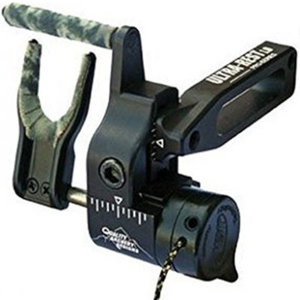As an experienced bowstring builder, it appears that one of the biggest issue as far as archery is concerned, is how to determine a string length on a recurve bow. At this point, let us discuss and clarify what the industry standards really demands and why they should be set up.
In recent years, people like Ben Pearson, Gail, Howard Hill, Martin, Fred Bear and Earl Hoyt have taken archery to the point it is today. As the sport of archery evolve, it was soon understood that some kind of standards have to be set up so that everybody would implement same rules.
It appears that the popularity of recurve bows has given rise to some of these more seasoned AMO standards. With people still giving respect to traditional archery, it is important for both retailers and shooters to understand how to correctly determine the string length for your favorite recurve bows and this article is here to assist and guide you on how to go about it.
What is so special about a recurve bow?
Recurves can look like one strong piece, however most recurves available today in the market are called takedown bows. This implies that once they are unstrung, the bow will separate into three sections in order to provide easy flexibility and transport.
You hold the bow at the middle, which is known as the riser and is typically made of either metal, wood or carbon. The top and base parts of the recurve bow are called limbs and are made of fiberglass, carbon, wood and some other materials. The bow gets its energy from that unique curve located around the limb tip region, a design initially created by some Egyptian bowmen over thousands of years back.
You can simply recognize a recurve bow by mere looking at the curved tips present at the end of the recurve bow and it has been proven that these curved tips enhance the smoothness of the discharge and the speed of the bow. This bow is widely known for its vast use in the Olympics and sport of archery, where it is the main style of bow permitted in the competition.
Several archers mostly shoot with a recurve bow in bow hunting, field archery and 3D archery.

Getting started
Have you at any point tried to replace a bowstring, just to realize that you don’t have any idea about the correct string length that your bow will be needing? Many of us have actually left the findings for the attendant at our various sporting goods store.
Despite the fact that many bows now come with their preset string, it is good you know some simple tricks in case you ever need to replace your old string or insert a string on a stringless bow.

You can use the method below to find out the accurate string length of your bow:
#1. AMO Length Method
AMO is the abbreviation for Archery Manufacturers and Merchants Organization. With this method, a bow will be marked off with the AMO, which is the standard length of the recurve bow. This is particularly useful in finding out the bowstring length.
The AMO shows the tip-to-tip length of the bow, and has become an accepted rule among various bowmen and archers. They consider a bowstring length of 3″ as the correct string length on a longbow. While on a recurve bow, it is 4″ less the AMO.
This implies that for a 58″ AMO, we would require a 55″ bowstring length for a longbow and a 54″ bowstring length if it were a recurve bow. You need to know that many shops really offer bowstring lengths as per the AMO, so you would require a 58″ AMO bowstring for the case of a 58″ AMO. Therefore, it is better you ask your chosen sporting goods store whether they offer bowstring length using either the actual length or the AMO.
Some brands of recurve bows always have a label containing several data like draw, cable, string length and weight. This makes it easier for you to find out that the correct string length that you actually need for a particular recurve bow.
#2. Manual method
The label or the AMO can be missing sometimes on the bow. In such situation, you are left with no other choice than to manually determine the string length.
To begin, you will need a measuring tape to find out the accurate string length. With this measuring tape, measure along the unique curve of the recurve bow limb starting from one string groove to another. You can likewise do your measurement from tip-to-tip in order to discover the AMO and afterward subtract appropriately based on the make of the bow.

Make sure you take a measurement across the face of the recurve bow limbs and not across the handle’s curve.
As time goes on, this method turns out to become a little bit trickier when carrying out your measurement. The AMO standard for string length proposes that a compound string length be discovered by applying a tension of 100 lbs. and measuring your string from pin to another pin.
An approach to go about this yourself is to insert the bow inside a bow press. Thereafter, take a bit of string, make a loop with it and place it on the peg located on the cam. It is now time to wrap it around the cams and convey the string to the peg on the other side of the bow.
Remember to hold the cams so that they appear the same when the bow is really strung. You can even manipulate the height of the brace to make sure you have a sensible vibe and visual of how the bow will look when completely strung. From that point, you can take a marker and check the string at the peg located at the opposite side of the loop.
Conclusion
I believe this article has revealed some insight into how string lengths are being determined on a recurve bow and why they should be measured using the AMO standard.
You may still be faced with some little challenges, but the methods discussed above has been tested and proven to work out most of the time.


